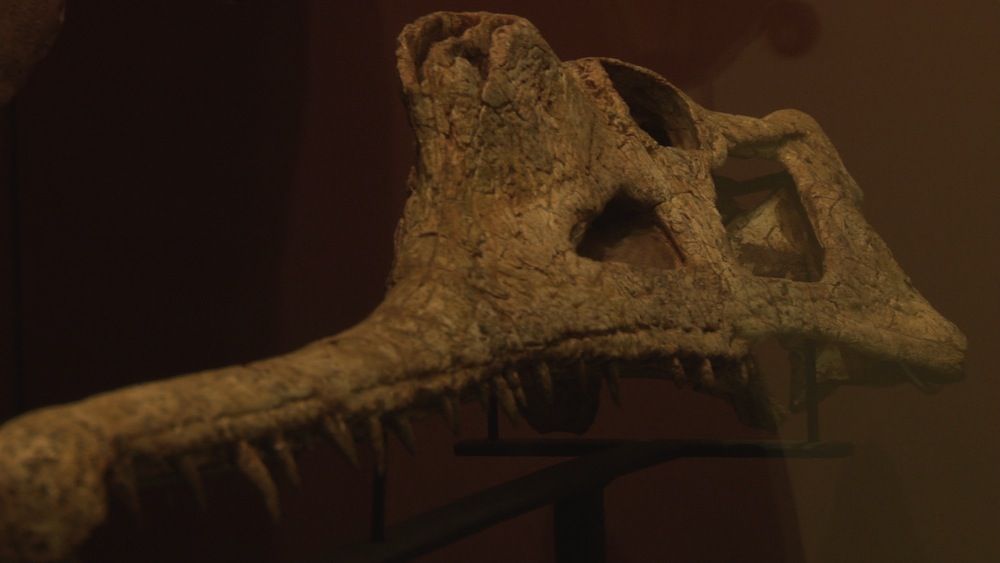New 'Swamp Monster' Skull Found in Texas

A toothy, long-nosed skull found in Texas belonged to a "swamp monster" that lived more than 200 million years ago.
The creature is a previously unknown type of phytosaur, an extinct creature that hunted fish and other prey along the shallow edges of rivers and lakes. Dubbed Machaeroprosopus lottorum, the phytosaur probably measured about 18 feet (5 meters) long.
"They had basically the same lifestyle as the modern crocodile, by living in and around the water, eating fish, and whatever animals came to the margins of the rivers and lakes," study researcher Bill Mueller, assistant curator of paleontology at the Museum of Texas Tech University, said in a statement. [Predator X: See Images of Ancient Monsters of the Sea]
Discovering something new
Phytosaurs are a common find in the Cooper Canyon formation in Garza County, Texas, where the new species was discovered. This area is now dry and scrubby, but in the late Triassic, it was a conifer forest with fern underbrush and an oxbow lake where phytosaurs hunted.
In 2001, Doug Cunningham, a research field assistant at the Texas Tech museum, unearthed the new skull during a dig.
"When he found it, just the very back end of the skull was sticking out of the ground. The rest was buried," Mueller said. "We excavated it and brought it into the museum to finish preparation."
Sign up for the Live Science daily newsletter now
Get the world’s most fascinating discoveries delivered straight to your inbox.
That preparation took years. Once the skull was out of the rock surrounding it, Mueller and his colleagues compared the features of the skull with other phytosaur skulls (more than 200 have been found in North America). They also analyzed another phytosaur skull, found 120 feet (36 m) from the first.
They discovered that their specimens represented a male and female from a new species, which they named M. lottorum in honor of the Lott family, the owners of the ranch where the fossil was found.
Extinct monster
Phytosaurs lived from about 230 million to 203 million years ago. They were one of the victims of the Triassic-Jurassic mass extinction, a huge die-off that wiped out many large land animals.
The new female's skull is about 3 feet (1 m) long, and she would have grown to be about 17 feet (5.1 m) total length, Mueller said. The male would have been about a foot longer. M. lottorum's delicate snout suggests it ate mostly fish, and not more robust prey. It would have looked very much like an alligator or crocodile, but its nostrils were up near its eyes at the base of its snout, rather than at the end.
The researchers reported their findings in the September 2013 issue of the journal Earth and Environmental Science Transactions of the Royal Society of Edinburgh.
Follow Stephanie Pappas on Twitter and Google+. Follow us @livescience, Facebook& Google+. Original article on LiveScience.

Stephanie Pappas is a contributing writer for Live Science, covering topics ranging from geoscience to archaeology to the human brain and behavior. She was previously a senior writer for Live Science but is now a freelancer based in Denver, Colorado, and regularly contributes to Scientific American and The Monitor, the monthly magazine of the American Psychological Association. Stephanie received a bachelor's degree in psychology from the University of South Carolina and a graduate certificate in science communication from the University of California, Santa Cruz.












